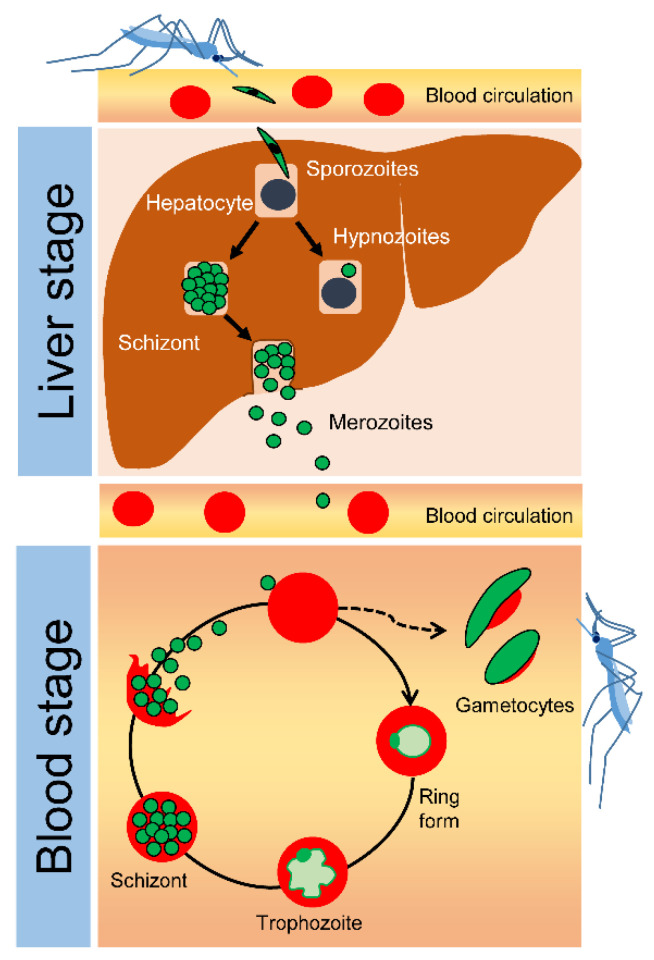Figure 1.
Development of Plasmodium parasites in the human body [7]. During blood feeding, a female mosquito secretes anti-blood clotting factors from the salivary gland, from which sporozoites are collaterally released into the bloodstream. Upon inoculation through the dermis, sporozoites eventually invade the liver, the first location of Plasmodium infection in humans. In the invaded liver, sporozoites enter hepatocytes and undergo asexual multiplication (schizogony), resulting in a merozoite-harboring hepatocyte known as a liver schizont. After approximately one week, the hepatic schizonts burst, and thousands of merozoites enter the bloodstream. For P. vivax and P. ovale, some merozoites undergo a stage of inactive proliferation (dormancy), known as hypnozoites, which cause relapse months or years later. Hepatocyte-derived merozoites invade erythrocytes and begin a repeated cycle of asexual, intraerythrocytic development involving ring-formed trophozoites, trophozoites, and schizonts. Rupture of schizonts causes periodic fever and, for some Plasmodium species, possibly leads to severe, lethal symptoms, such as anemia, multiorgan failure and cerebral malaria. Some host erythrocytes develop into sex cells, termed gametocytes. Female Anopheles mosquitoes take up gametocytes during a blood meal. In the mosquito gut, fertilization of gametocytes results in the production of sporozoites, which specifically migrate to the salivary glands of Anopheles mosquitoes to await inoculation at the next blood feed.

